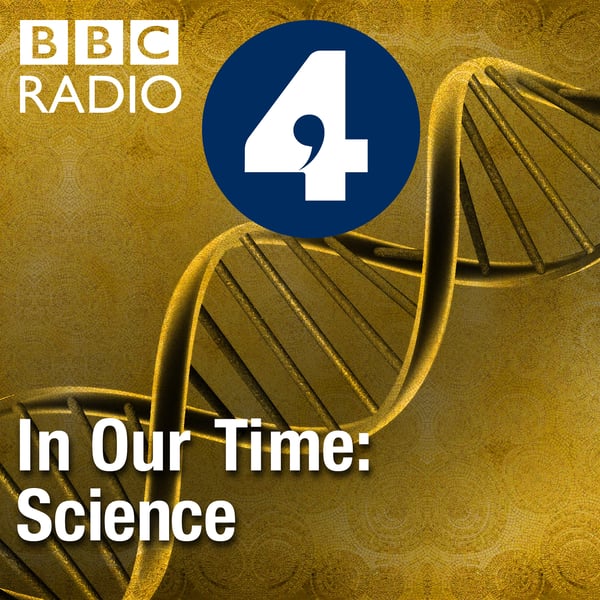Plasma
In Our Time: Science
BBC
4.5 • 1.4K Ratings
🗓️ 13 October 2016
⏱️ 46 minutes
🧾️ Download transcript
Summary
Transcript
Click on a timestamp to play from that location
| 0:00.0 | Thank you for downloading this episode of In Our Time, for news about in our time and for |
| 0:05.0 | recommendations about our archive, please follow us on Twitter at BBC in Our Time. |
| 0:10.0 | I hope you enjoy the programs. |
| 0:12.0 | Hello, Plasma thought of as the fourth state of matter after solid, liquid and gas. |
| 0:18.0 | When we realise that over 99% of all observable matter in the universe is plasma. |
| 0:23.5 | It makes planets like ours with so little plasma and so much solid, liquid and gas, exceptional |
| 0:28.3 | and all the more remarkable. |
| 0:30.2 | On the grander scale, plasma is what the sun is made from and when we look into the night sky almost everything we can see with the naked eyes made of plasma. |
| 0:38.0 | On the smaller scale here and Earth scientists make plasma to etch the microchips on which we rely for so much. |
| 0:44.0 | Plasma is in the fluorescent lights above our heads and in laboratories around the world |
| 0:48.0 | it's the subject of tests that might create one day an inexhaustible and clean |
| 0:52.3 | source of energy in nuclear fusion. |
| 0:54.8 | With me to discuss plasma are Justin Walk, Professor of Physics and Fellow Trinity College |
| 0:59.9 | at the University of Oxford, Kate Lancaster, Research Fellow for Innovation and Impact at the York |
| 1:05.0 | Plasma Institute at the University of York, and Bill Graham, Professor of Physics at Queens University |
| 1:09.9 | Belfast. |
| 1:10.9 | Justin Walk, how does plasma differ from gas at the atomic level? |
| 1:15.0 | Well in your introduction, Belvin you mentioned solids, liquids and gases and |
| 1:21.0 | and we know that to transition through those three is one a transition where you heat |
| 1:26.2 | things up. Ice becomes water, becomes water vapor when you put it in the kettle. And that |
| 1:30.9 | works for most substances, for example, iron will melt and become a liquid at |
| 1:34.9 | around 1500 degrees centigrade and then also become a gas if you heat it up further to maybe 3,000. |
... |
Please login to see the full transcript.
Disclaimer: The podcast and artwork embedded on this page are from BBC, and are the property of its owner and not affiliated with or endorsed by Tapesearch.
Generated transcripts are the property of BBC and are distributed freely under the Fair Use doctrine. Transcripts generated by Tapesearch are not guaranteed to be accurate.
Copyright © Tapesearch 2025.

